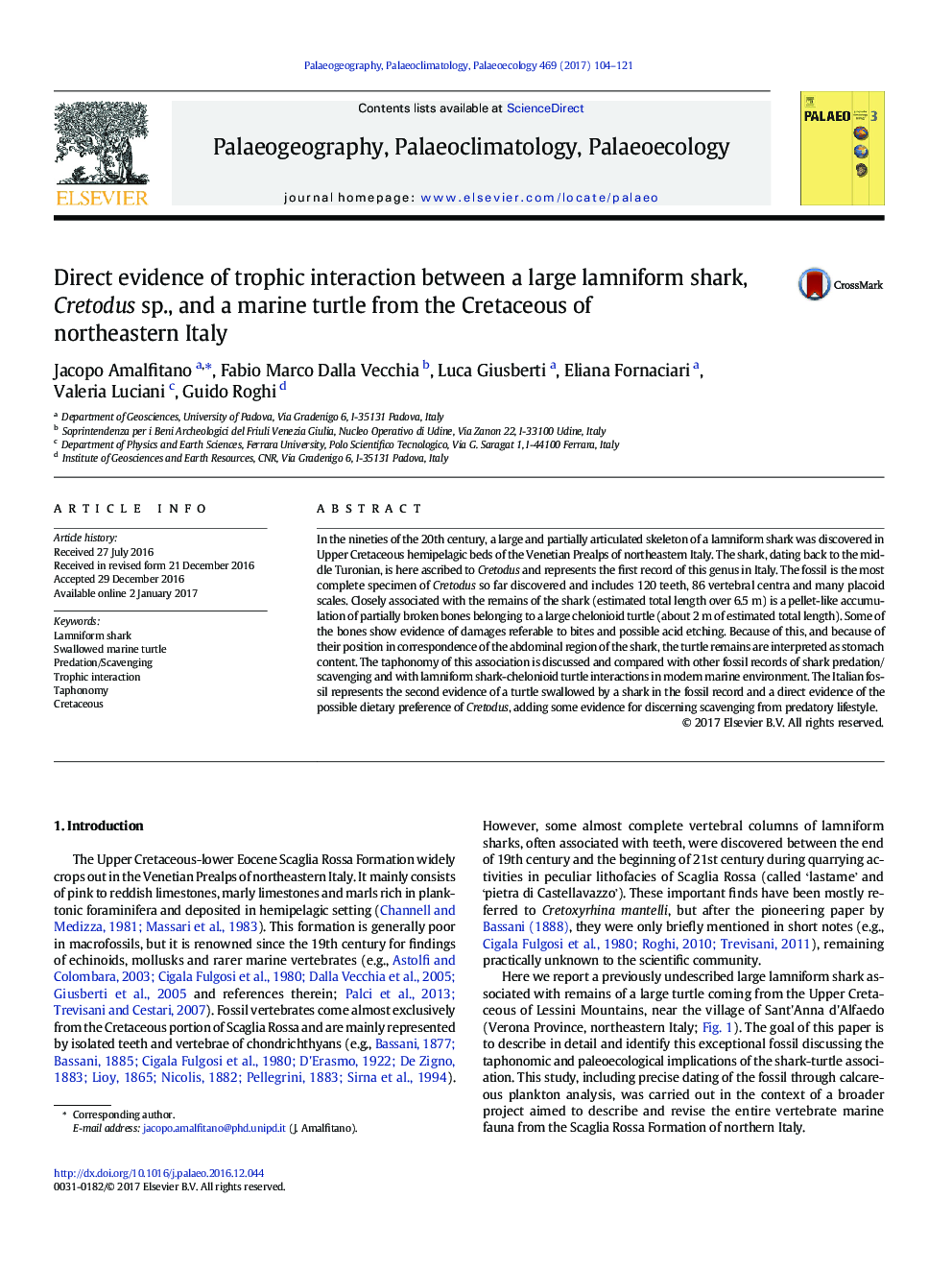| کد مقاله | کد نشریه | سال انتشار | مقاله انگلیسی | نسخه تمام متن |
|---|---|---|---|---|
| 5755724 | 1622123 | 2017 | 18 صفحه PDF | دانلود رایگان |

- A specimen of the Upper Cretaceous shark Cretodus is described from northern Italy
- The fossil is the most complete specimen of Cretodus so far discovered
- The specimen is associated with a pellet-like accumulation of a marine turtle
- The turtle remains are interpreted as stomach content of the shark
- The fossil represents a direct evidence of possible dietary preference of Cretodus
In the nineties of the 20th century, a large and partially articulated skeleton of a lamniform shark was discovered in Upper Cretaceous hemipelagic beds of the Venetian Prealps of northeastern Italy. The shark, dating back to the middle Turonian, is here ascribed to Cretodus and represents the first record of this genus in Italy. The fossil is the most complete specimen of Cretodus so far discovered and includes 120 teeth, 86 vertebral centra and many placoid scales. Closely associated with the remains of the shark (estimated total length over 6.5Â m) is a pellet-like accumulation of partially broken bones belonging to a large chelonioid turtle (about 2Â m of estimated total length). Some of the bones show evidence of damages referable to bites and possible acid etching. Because of this, and because of their position in correspondence of the abdominal region of the shark, the turtle remains are interpreted as stomach content. The taphonomy of this association is discussed and compared with other fossil records of shark predation/scavenging and with lamniform shark-chelonioid turtle interactions in modern marine environment. The Italian fossil represents the second evidence of a turtle swallowed by a shark in the fossil record and a direct evidence of the possible dietary preference of Cretodus, adding some evidence for discerning scavenging from predatory lifestyle.
Journal: Palaeogeography, Palaeoclimatology, Palaeoecology - Volume 469, 1 March 2017, Pages 104-121